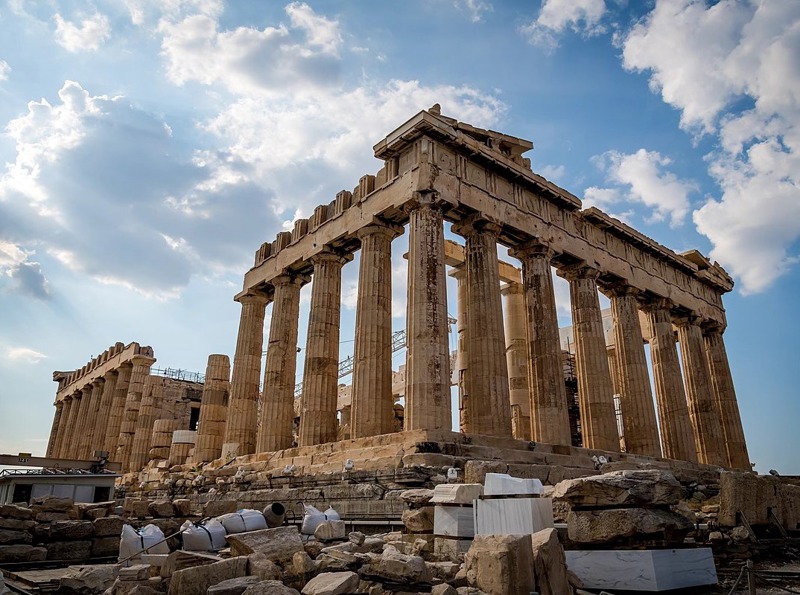Travel Log
The Parthenon, nestled atop the Acropolis in Athens, is a timeless symbol of ancient Greek civilization and architectural prowess. Constructed between 447 and 438 BCE under the direction of the renowned sculptor Phidias, the Parthenon was dedicated to Athena, the patron goddess of Athens, and served as the city's grandest temple.
At first sight, the Parthenon's imposing Doric columns and intricate sculptural friezes command attention, but its significance extends far beyond its architectural splendor. The temple's construction marked a pinnacle of
Joe Lee
5 chapters
28 Feb 2024
The Parthenon
February 25, 2024
|
Greece
The Parthenon, nestled atop the Acropolis in Athens, is a timeless symbol of ancient Greek civilization and architectural prowess. Constructed between 447 and 438 BCE under the direction of the renowned sculptor Phidias, the Parthenon was dedicated to Athena, the patron goddess of Athens, and served as the city's grandest temple.
At first sight, the Parthenon's imposing Doric columns and intricate sculptural friezes command attention, but its significance extends far beyond its architectural splendor. The temple's construction marked a pinnacle of

Athenian democracy and cultural achievement during the Golden Age of Greece. It symbolized Athenian pride, wealth, and power, serving as a testament to the city-state's dominance in the ancient world.
The Parthenon's architectural design reflects the Greeks' pursuit of perfection and harmony in art and architecture. Its proportions adhere to the principles of the Golden Ratio, showcasing the Greeks' mathematical precision and aesthetic sensibilities. Moreover, the temple's decorative elements, including the breathtaking friezes and metopes, depict scenes from Greek mythology and historical events, celebrating the city's cultural heritage and glorifying its patron goddess.
Throughout its long history, the Parthenon has witnessed moments of triumph and tragedy. It survived invasions, earthquakes, and centuries of neglect, bearing witness to the ebb and flow of human civilization. Despite the ravages of time and human conflict, the Parthenon remains an enduring symbol of Western civilization's cradle, inspiring awe and admiration in all who behold its majestic ruins.
Today, the Parthenon stands as a UNESCO World Heritage site, attracting millions of visitors from around the globe. Its preservation and restoration efforts testify to humanity's commitment to safeguarding our shared cultural heritage for future generations. As I stood in awe before this magnificent temple, I couldn't help but feel a profound connection to the ancient Greeks and their remarkable achievements in art, architecture, and culture.
Share your travel adventures like this!
Create your own travel blog in one step
Share with friends and family to follow your journey
Easy set up, no technical knowledge needed and unlimited storage!